Know as a vast island rich in wildlife and adventures, Borneo is perfect for families keen to have new experiences and lay down once-in-a-lifetime memories. Starting from the island’s Kota Kinabalu airport (accessible from Kuala Lumpur), your first step is a speedboat transfer.
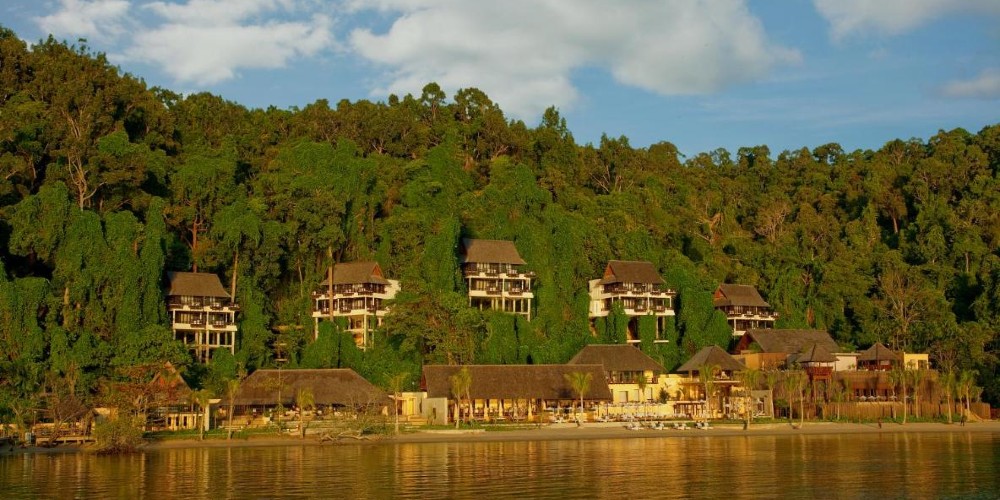
Gaya Island Resort, Tunku Abdul Rahman Park
Day 1-4: Gaya Island Resort, Borneo
Fringed by a golden beach and backed by lush rainforest, Gaya Island Resort is a welcoming retreat where you can recover from your journey.
Surrounded by a wealth of coral reefs for diving, indigenous flora and fauna for enriching nature walks, and an award-winning spa in a unique mangrove setting, as well as plenty of restaurants and a lounge bar overlooking the pool, it has a real back-to-nature appeal.
Nestled within the rainforest are hill villas with a variety of views including mangrove, canopy, tropical rainforest, and Mount Kinabalu in the distance.

Explore traditional customs, Gaya Island Resort
Beyond the room there really is something for everyone, big or small. Settle into one of the spa’s treatment rooms for a sleep inducing massage after a guided meditation session; go diving and discover the tropical marine life in the coral reefs; learn about Gaya Island Resort Marine Centre’s turtle and conservation efforts; dine at Fishermans Cove for the freshest seafood dishes on the rooftop under a starry sky.
Book your stay at Gaya Island Resort
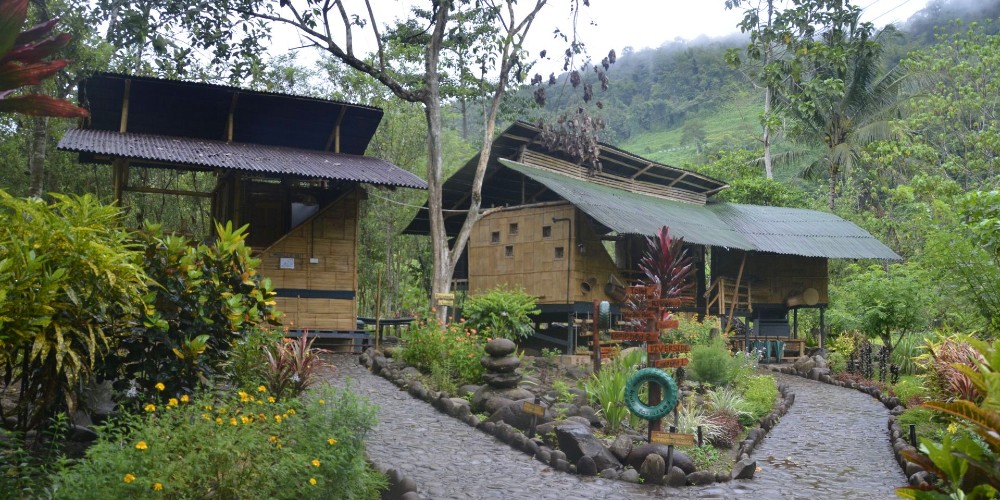
Guest chalets, Kiulu Farmstay, Kiulu Valley
Day 5: Kiulu Farmstay in Kiulu Valley
After breakfast, depart by speedboat back to the mainland and transfer to Kiulu Farmstay in Kiulu Valley.
This is a small area in the north western part of Sabah with a population of over 2,000 people. Its name (Kiulu) was derived from a plant that is called Tulu, which is a small bamboo that commonly grows on the river banks. Agriculture is the main source of livelihood for local communities in Kiulu Valley – this includes rubber plantations, fruit orchards, paddy fields and mixed gardens, mostly consisting of vegetables, pineapples and ginger.
The area is committed to using local resources (accommodation, activities, and people), maintaining unique culture practices and developing rural tourism through training of hosts and linking homestays with surrounding products or activities. This is what makes Kiulu Valley unique and a great place for family outings, – it is a real learning experience and one that will leave a lasting memory.
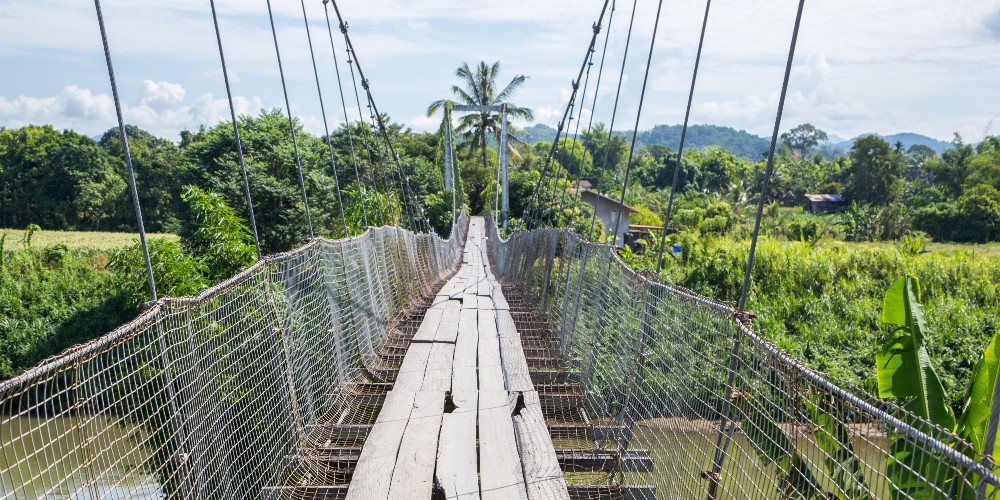
Tamparuli Suspension Bridge, Kiulu Valley
On the way, stop at Tamparuli Suspension Bridge, passing by the scenic views of the Kiulu Valley. Take a walk through the local village and see the local school, lush paddy fields and the hanging bridge, before returning to Kiulu Farmstay for dinner.
Kiulu Farmstay is based on the Bornean communal culture of longhouses with an eye towards sustainability – using locally sourced and treated wood that fits perfectly with the surrounding jungles. If you’re keen for more adventure and cultural experiences, there are many optional activities to try such as quad biking, cycling, water tubing and cultural activities.
Find out more and book your stay at Kiulu Farmstay

Orangutan, Sepilok Nature Reserve
Day 6: Sepilok Nature Reserve in Borneo
Time for an early start and a longer transfer (about five hours to be exact), but your journey will be rich with things to see and do.
First, visit the Mt Kinabalu National Park. An area known for its incredible biodiversity, here you can hike local trails around the base of the huge granite monolith while your guide offers insights about the immense variety of flora along the trail, including their medicinal properties and their importance to local communities.
Take a wander through the Kinabalu Botanical Gardens where a one-hour tour is provided, allowing guests to learn more about some of the 5,000-6,000 local species of flora found in the area.
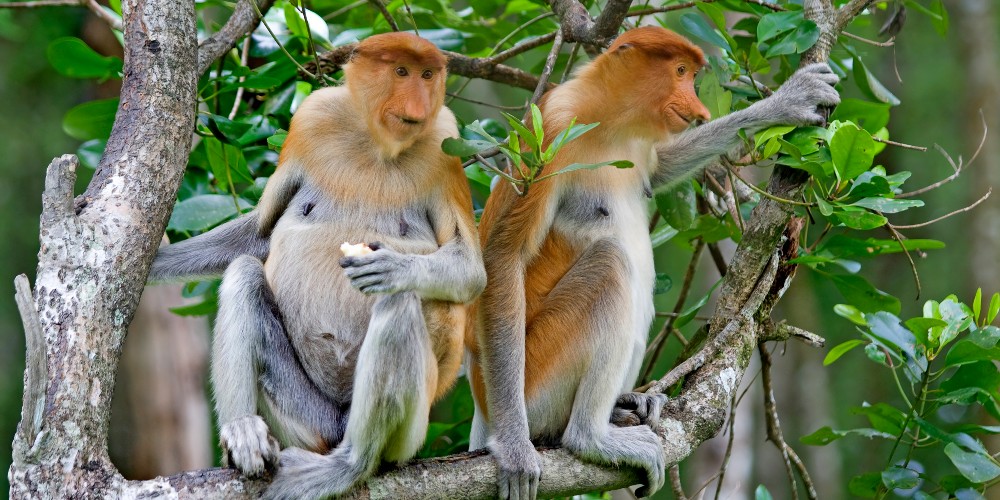
Probocis Monkeys, Sepilok, Borneo
Continue to the Labuk Bay Proboscis Monkey Sanctuary, stopping for a lunch en-route and arrive at Labuk Bay for the early afternoon feeding session. The proboscis monkey is unique to Borneo, with the males identifiable by their huge floppy noses. Here you have a fantastic chance to get up close with these unique animals. There are a variety of other species located in the sanctuary, such as hornbill birds and grey leaf monkeys, which you might be lucky enough to spot.
Your jungle adventure starts among the tropical plants, grasses, trees and spectacular orchids which surround the chalets of the Sepilok Nature Resort, within walking distance of the world famous Kabili-Sepilok Forest Reserve, home for the last wild orangutans of Northern Borneo 0 also known as ‘wild men of Borneo’.
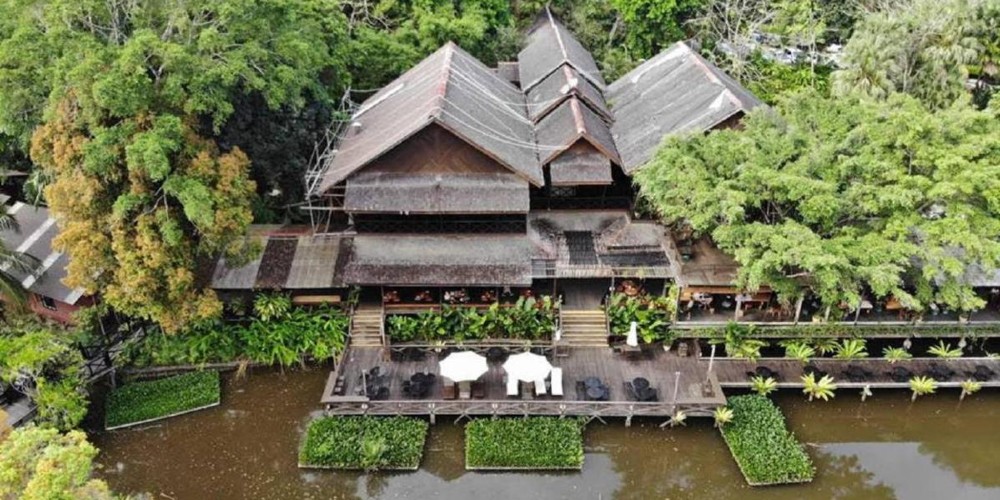
Sepilok Nature Reserve
All the timber chalets are set around a beautiful natural lake and have en-suite private bathrooms with lake or jungle view verandas. The surrounding garden is huge with over 150 species of Asian Orchid! During your stay, enjoy flavours from both the East and West on the terrace of the lodge’s restaurant, accompanied by the mesmerising chorus of the tree frogs.
Find out more and book at stay at Sepilok Nature Reserve
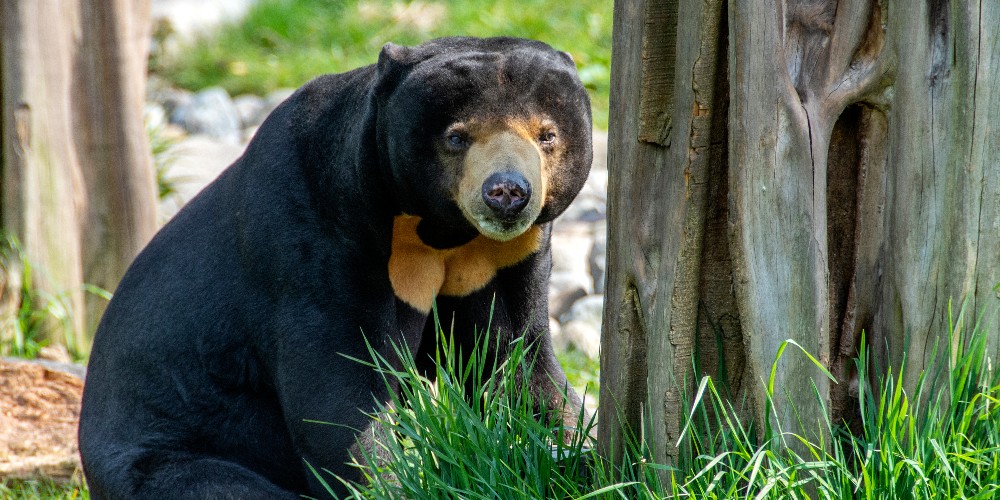
Sun Bear, Bornean Sun Bear Conservation Centre
Day 7: Kinabatangan Wetlands Resort
Spend the morning at the world’s largest orangutan rehabilitation centre at Sepilok and see the orangutans being fed by the rangers.
After that, go to the Bornean Sun Bear Conservation Centre where there are currently 36 bears housed at the centre, rescued from poachers.
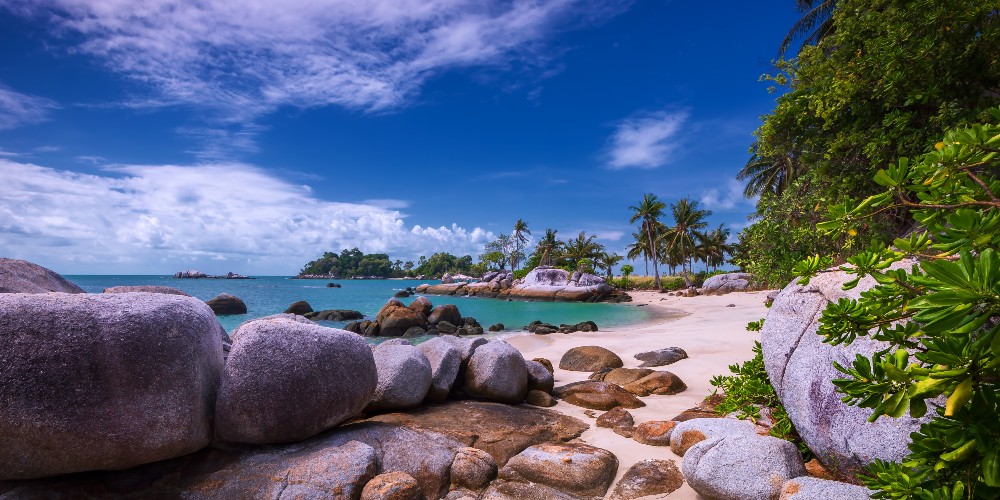
Berhala Island, Borneo
Now it’s time to get a boat to Abai, Kinabatangan. On the 1.5 hour cruise, you’ll pass Berhala Island, a historical site from World War II, before the boat journey continues towards the mangroves and villages of Abai. This cruise also offers views of the different types of vegetation found along Sabah’s mighty Kinabatangan River, as well as plenty of wildlife including macaques, wild orangutan, proboscis monkeys and mudskippers.
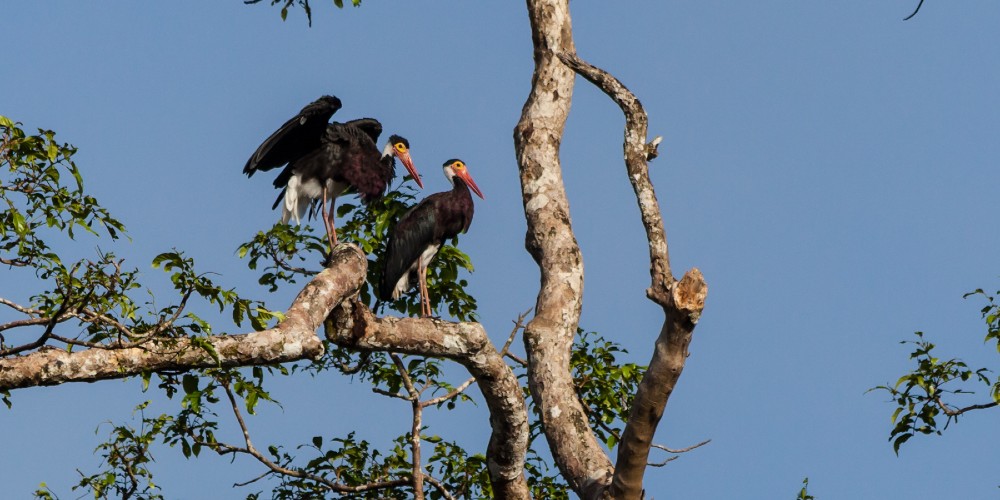
Storm’s Storks, Kinabatangan River
If you are looking for something exclusive and away from the main tourist hotspots of Sukau and Bilit, Kinabatangan Wetlands Resort is the place to go.
Located in Abai, a quieter area of the Lower Kinabatangan Floodplain, the resort offers 10 chalets in total, all ensuite. You could take another river cruise on a small, opened topped boat to get even closer to the incredible environment around you, or simply spend time relaxing and observing nature from your chalet; myriad birds and monkeys, such as silver leaf langurs, maroon langurs, hose langurs, and wild orangutan, are regularly spotted within the area. Raised boardwalks are available for night walks and morning strolls.
Day 8: river cruises and night safaris
Wake up to an early morning cruise to nearby ox-bow lake, Danau Pitas, to explore the area. There’s a local fishing village worth a visit before you return to the resort for breakfast. Spend the afternoon exploring more of the river’s hidden gems, including firefly colonies, before you cruise back to the resort for dinner. After dinner, there’s the option of a night river safari on the lookout for nocturnal species.
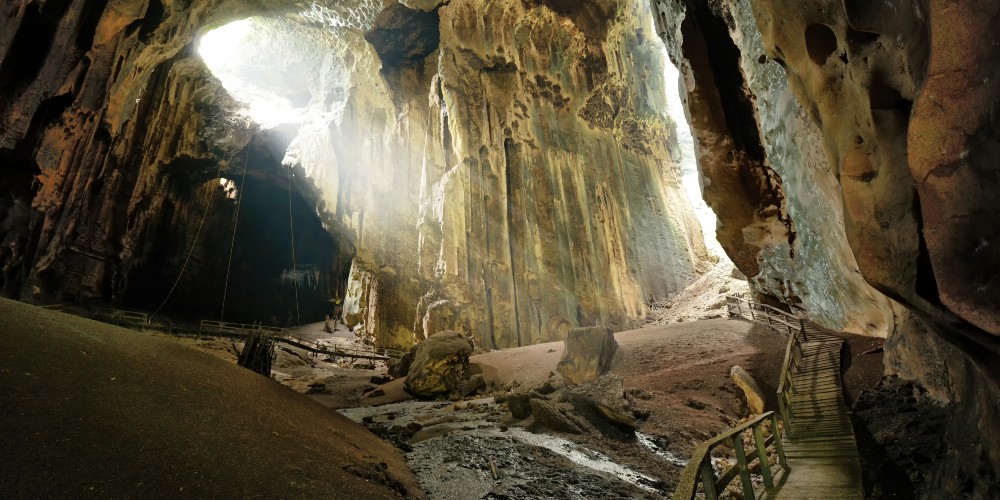
Gomantong Caves
Day 9: Gomantong Caves
Next stop, Sukau and an exploration of the intricate limestone system of the Gomantong Caves. After walking about 10 minutes, you will reach two main accessible caves – Black & White Caves. Within these caves the ancient tradition of collecting solidified swiftlet saliva for ‘Birds Nest Soup’ is still carried out, although under strict licensing and on sustainable terms.
The area surrounding the caves is thick rainforest, where, on occasions, you may see wild orangutans. It’s also home to around two million bats and the opportunistic bat hawk.
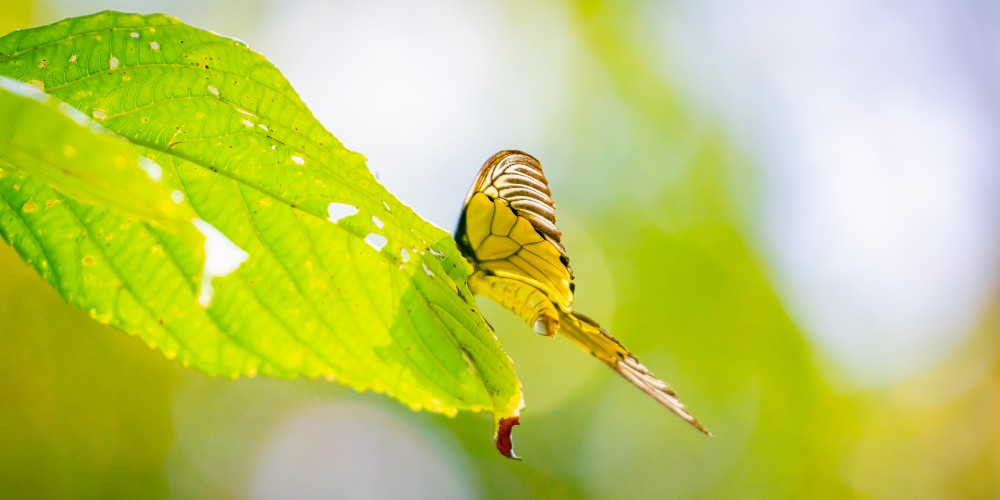
Lesser Gull Butterfly, Danum Valley
Journey onto Lahad Datu for lunch before the last leg of the journey into the luscious virgin rainforest area of Danum Valley – one of the world’s most complex ecosystems. Here you will arrive at Borneo Rainforest Lodge.
First on the list must be a late afternoon walk along the 130-metre-high, 300-metre-long canopy walk, high up in the 130 million year-old rainforest which hums with jungle sounds. After dinner, board an open-top 4WD vehicle for an exhilarating night spotlighting tour. Accompanied by a local guide, who shines a light into the jungle looking for nocturnal animals, you will be able to spot a range of nighttime creatures that inhabit the reserve, from samba deer to civet cats, leopards, and a stunning collection of insects and frogs.
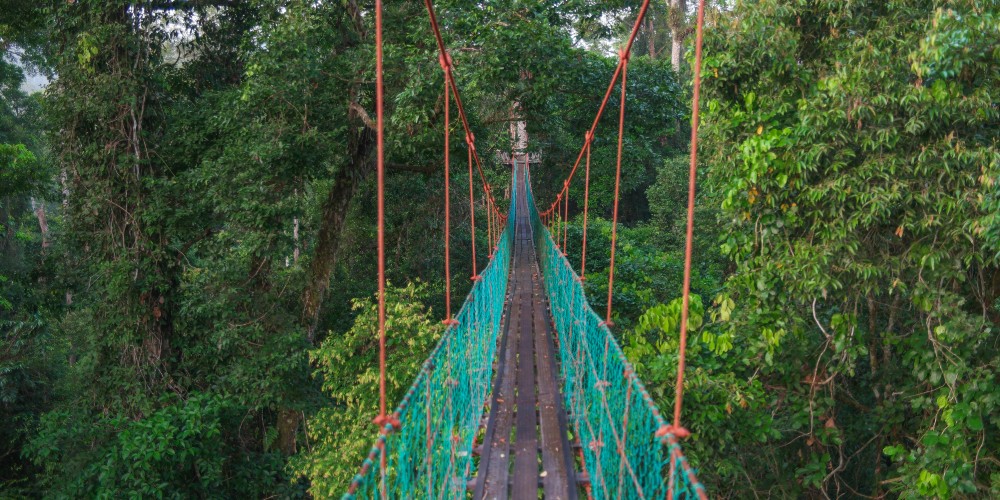
Rainforest canopy walk, Danum Valley
The Borneo Rainforest Lodge is set within 43,800 hectares of protected virgin rainforest of the Danum Valley and is surrounded by more than 320 species of bird and 124 species of mammals, including the Asian elephant and wild orangutan. This is one of the best places for viewing Borneo’s wildlife. It delivers the wow factor in terms of location and experience and, while it is basic, clean and comfortable, the facilities and standards here are of a very high standard, given how far away it is from amenities.
Find out more and book a stay at Borneo Rainforest Lodge
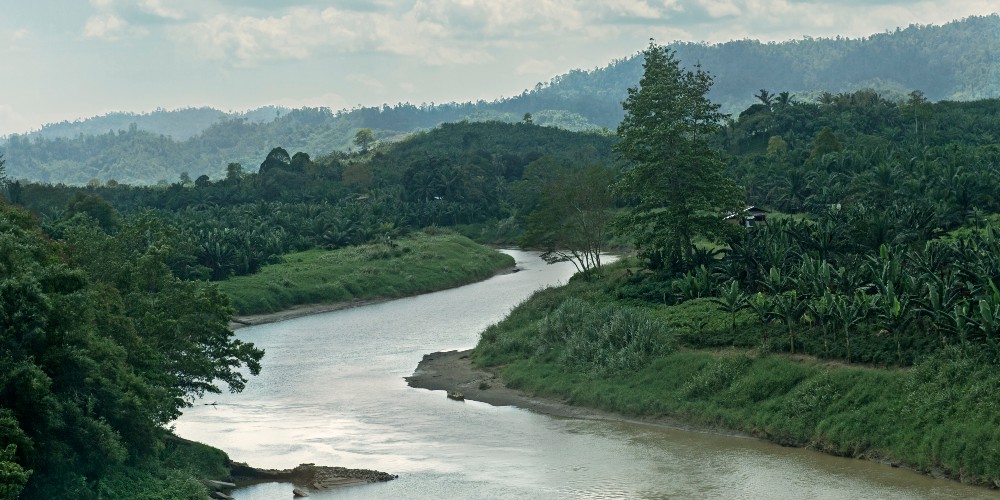
Danum River
Day 10-11: Borneo Rainforest Lodge
The morning chorus of the jungle is a cacophony of sounds ranging from birds to primates, such as the gibbon.
Taking a packed breakfast, travel to a 200 year-old Kadazandusun Burial Site, known as “Coffin Cliff”, along the 2.6km View Point Trail. The end of this trail results in spectacular views over an ocean of million-year-old jungle – a truly spectacular sight. The return journey includes a trip to waterfalls where guests can enjoy a refreshing dip in the Jacuzzi Pool – with the added benefit of nibbling fish!
Afternoon is at leisure; however there is a range of optional activities available, such as private trekking, tubing on the Danum River and specialised guided tours. There is also a series of tracks leading around the Canopy Walk that guests are free to discover at their leisure.
This evening, venture into the jungle on foot with a local guide. Quietly entering the jungle reveals a stunning array of wildlife, not to mention the variety and size of the many insects that flourish in the evening hours.
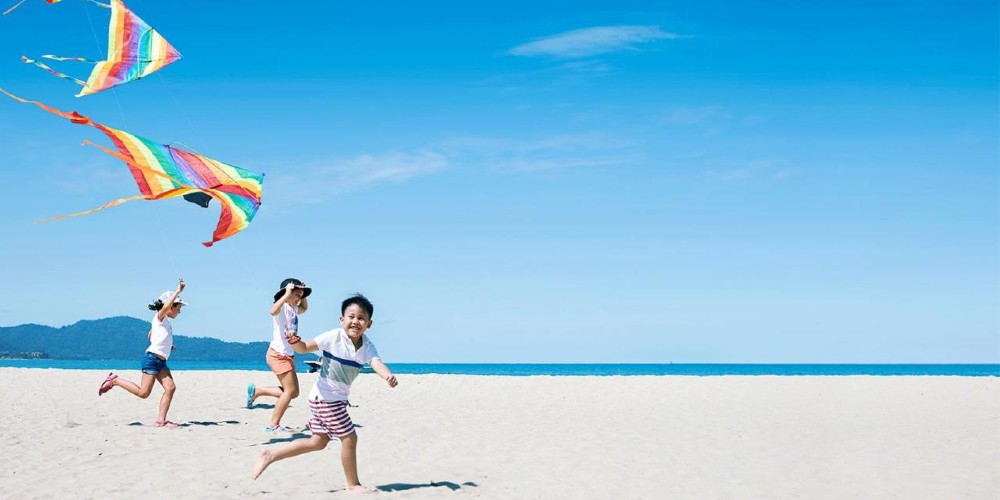
Downtime on the beach, Shangri-La Rasa Ria Resort
Day 12-15: Shangri-La Rasa Ria Resort
On your final rainforest morning, take a last stroll in this jaw-dropping environment before you leave for Lahad Datu Airport for the flight to Kota Kinabalu, and an onward short transfer to Shangri-La Rasa Ria Resort. A final few days of luxury before your holidays ends, the Shangri La Rasa Ria is a large resort style hotel situated between forested hills and Pantai Dalit beach.
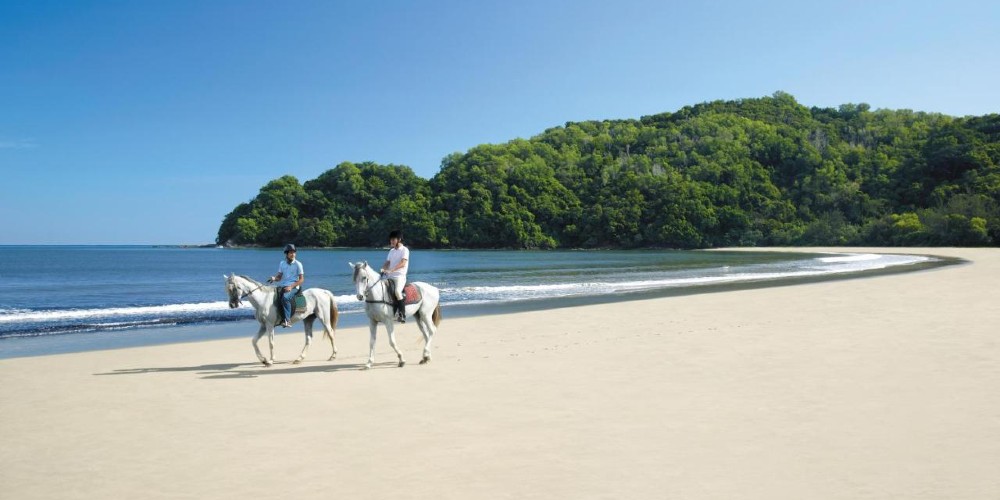
Horse riding, Shangri-La Rasa Ria Resort
For sports lovers, choose from horse riding, wind surfing, white water rafting, cycling and tennis. For those who want to immerse themselves in more nature. the hotel also has its own 64 acre nature reserve with treetop canopy walkways. Whether you want to visit nearby hot springs or just chill out on the beach, the hotel can organise the perfect way to end your Borneo adventure.

